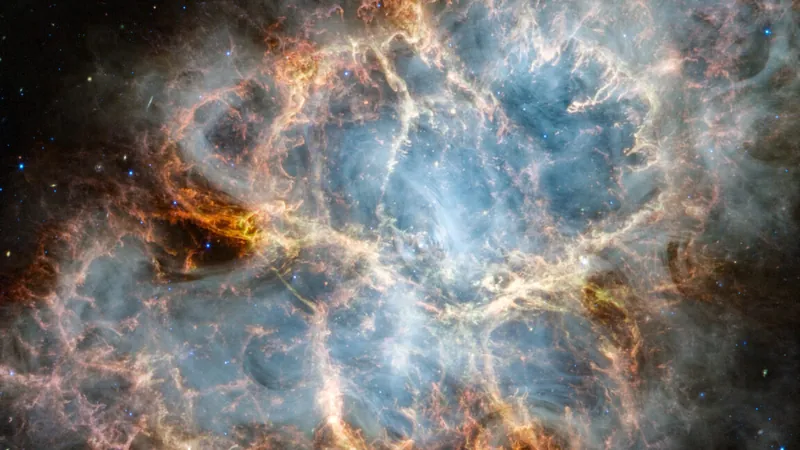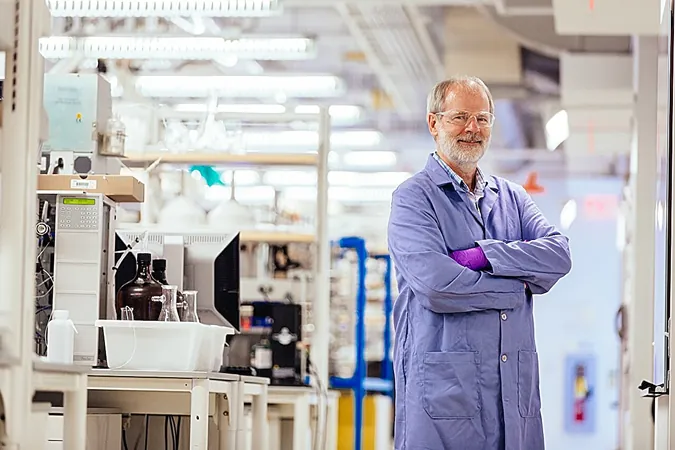
James Webb Space Telescope: Unlocking the Mysteries of the Universe—And It’s Just Getting Started!
2024-11-06
Author: John Tan
Since its groundbreaking launch nearly three years ago, the James Webb Space Telescope (JWST) has redefined our understanding of the cosmos, achieving phenomenal success and garnering the admiration of astronomers around the globe. Positioned in a halo-like orbit nearly a million miles from Earth, Webb is capturing imagery deeper into space—and further back in time—than humanity has ever witnessed.
In a landmark discovery reported in May, astronomers identified the most distant galaxy known to date. This enigmatic, fuzzy red blob allows us a glimpse of the universe as it was merely 290 million years after the Big Bang, with light that has traveled more than 13 billion years to finally reach Webb's gold-coated mirror. This colossal galaxy boasts a mass several hundred million times that of our Sun, revealing the sheer scale and complexity of early cosmic structures.
Building upon this discovery, in July, scientists unveiled a stunning image of an exoplanet orbiting a star just slightly cooler than our own Sun, located nearly 12 light-years away. This remarkable alien world is several times more massive than Jupiter and holds the title of the closest exoplanet ever to be directly imaged. Webb's state-of-the-art coronagraph effectively blocks the overwhelming brightness of its parent star, allowing researchers to discern the faint light from the planet and analyze its atmospheric composition through spectroscopy.
These achievements represent only a fraction of the astronomic discoveries that the $10 billion telescope has facilitated since beginning scientific observations in 2022. The overwhelming enthusiasm for Webb is palpable, with scientists eager to utilize its capabilities for future explorations.
A Surge in Scientific Proposals
In a testament to Webb’s popularity, the Space Telescope Science Institute (STScI) announced last week that they received a record 2,377 unique proposals from scientific teams eager for observing time. This request for the “Cycle 4” observations alone represents approximately 78,000 hours, a staggering nine times the available observation capacity for this cycle. The previous observing cycle experienced a similar oversubscription but offered less total time for scientific inquiry.
Over 600 reviewers will meticulously assess these proposals to select the most promising projects. A significant portion will focus on exploring "high-redshift" galaxies, remnants of the first generation formed after the Big Bang. The light from these ancient galaxies has shifted to longer wavelengths due to cosmic expansion. Additionally, studies of exoplanet atmospheres and various star populations are close contenders, showcasing the vast array of interests among astronomers.
A Collaborative Ocean of Discoveries
The James Webb Space Telescope is a collaborative project involving NASA, the European Space Agency, and the Canadian Space Agency. Its impressive primary mirror, measuring 21.3 feet (6.5 meters), equipped with four advanced infrared instruments, empowers it to detect faint thermal energy from the cold, dark expanses of space. This capacity makes Webb an extraordinarily versatile research platform.
In this ongoing observational cycle, astronomers are not just limited to distant galaxies; they are also investigating celestial bodies within our Solar System, exoplanets in nearby star systems, and even gas and dust fields swirling between stars. Webb’s scientific targets are as diverse as they are profound, showcasing a breadth only matched by the Hubble Space Telescope. However, Webb’s larger mirror allows it to observe objects over 100 times fainter than those visible to Hubble.
The Uncharted Future
With less than two-and-a-half years of operation, Webb has merely skimmed the surface of its impressive potential. As time progresses, the likelihood of uncovering even older and more distant galaxies grows exponentially. Thousands of confirmed exoplanets await Webb's analytical gaze, ready to unveil their secrets. Moreover, the vast universe holds mysteries that the telescope is destined to reveal in the coming years.
It’s exciting to think about what the future may hold. With advancements in technology and the potential of new heavy-lift rockets or innovative in-space assembly, the deployment of even more sensitive space telescopes may one day be on the horizon. Until then, the scientific community—and the world at large—can delight in the stunning revelations Webb continues to provide. It seems this cosmic odyssey is only the beginning, and the show is just getting started!

 Brasil (PT)
Brasil (PT)
 Canada (EN)
Canada (EN)
 Chile (ES)
Chile (ES)
 España (ES)
España (ES)
 France (FR)
France (FR)
 Hong Kong (EN)
Hong Kong (EN)
 Italia (IT)
Italia (IT)
 日本 (JA)
日本 (JA)
 Magyarország (HU)
Magyarország (HU)
 Norge (NO)
Norge (NO)
 Polska (PL)
Polska (PL)
 Schweiz (DE)
Schweiz (DE)
 Singapore (EN)
Singapore (EN)
 Sverige (SV)
Sverige (SV)
 Suomi (FI)
Suomi (FI)
 Türkiye (TR)
Türkiye (TR)